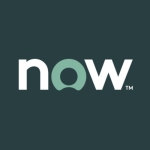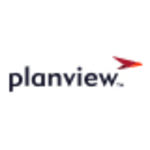What is our primary use case?
Broadcom Clarity PPM has multiple use cases, and with one of the clients that had implemented it recently, the tool was used for capital budgeting purposes. The client is one of the giants in the U.S. that had a PPM tool for managing all the project portfolios, but that tool was developed in-house. It was a homegrown solution, but there were a lot of limitations because some specific expertise was required. The tool was outdated and was difficult to scale, so my company replaced it with Broadcom Clarity PPM as it is an enterprise-level solution with high scalability and could be moved to the cloud.
The main business case was for capital budgeting, more like investment management, where there are multiple units and the client proposed some ideas. My company prioritized those ideas and did budgeting accordingly. For example, there are four different business objectives. One is lights on, the second is compliance, the third is business growth, and the fourth is running the business. My company tries to allocate a certain amount or certain funds towards the four business objectives for a particular financial year. My company then considers all the ideas from different stakeholders then tries to prioritize those ideas within Broadcom Clarity PPM.
What is most valuable?
The most useful feature for me as an implementer of Broadcom Clarity PPM is its extensibility. The tool is pretty extensible, and I haven't had any issues with it in terms of it getting used for multiple scenarios and for multiple clients where there's a need for high customization. Broadcom Clarity PPM is a very, very customizable tool, so you can pretty much implement any business process on it with no issues.
What needs improvement?
One of the major pain points for me when it comes to Broadcom Clarity PPM is the new UI. The new UI is very good in terms of functionality and the drag and draw features, but it's not very responsive. When I say that it's not very responsive, what I mean is that sometimes, the tool is not very user-friendly. For example, a user saves a value on the form, but the tool doesn't give any indication to the user that the value has been saved. Some users are moving from the classic UI to the new UI, and end up getting confused because on the classic UI, when you click "Save", it'll save the information and you'll get an indication that it was saved. With the new UI, it auto saves the information, but it doesn't give an indication in the form of a popup box that "this form has been saved", or any type of message indicating that the information was successfully saved. It's been confusing for users who move to the new UI because of that. The users don't understand when the values are being saved or not being saved, even if there's an auto-save feature in the new UI.
What I'd like to see in the next release of Broadcom Clarity PPM is fine-grained security control on the new UI, because currently there's free level security, but it's based on the group, and I would like to have access to the individual phase and the users to lock a specific phase. For that type of security, higher level security is required, which is available on the classic UI, but not available on the new UI. The new UI interface should also be a little bit more responsive. Currently, it's responsive and it's fast, but whenever it saves information, it doesn't show any notification, and that can be very confusing for users.
For how long have I used the solution?
I've been working with Broadcom Clarity PPM for a few years now. I'm an implementer of the tool, and I've implemented it across multiple clients throughout my career, mainly for three different companies. I do have hands-on experience with Broadcom Clarity PPM. Currently, I'm using version 15.9.3.
Buyer's Guide
Broadcom Clarity
October 2025
Learn what your peers think about Broadcom Clarity. Get advice and tips from experienced pros sharing their opinions. Updated: October 2025.
868,787 professionals have used our research since 2012.
What do I think about the stability of the solution?
Broadcom Clarity PPM is a pretty stable tool. I haven't seen many issues, but it's a little bit sensitive towards JVM memory settings and how it is architected. My company had a lot of applications towards implementation and had some performance issues on the database side, so there was a need to adjust some of the parameters and those parameters were not documented anywhere, but once you open a support case with Broadcom, the team will tell you to try certain parameters and changes. The scenario my company experienced isn't exclusively documented, but Broadcom was aware of it and told my company that it was on a case-to-case basis, but Broadcom Clarity PPM is pretty stable.
How are customer service and support?
The Broadcom Clarity PPM technical support team was very helpful, though it would depend on the engineer handling the case. Most of the time, I found the support useful. I'm rating support four out of five.
Which solution did I use previously and why did I switch?
My company went with Broadcom Clarity PPM because of complex business processes and implementation, and we particularly chose the tool because it was highly customizable. Because of complex and secure business requirements, there was so much focus on security that it was very complicated compared to regular implementation, so my company decided to go with Broadcom Clarity PPM.
Broadcom Clarity PPM is also a leader in the PPM space in the Gartner Quadrant, so my company picked up the top five to six tools and compared those tools, but as Broadcom Clarity PPM was highly customizable, we picked it over the other tools.
How was the initial setup?
How easy or complex the initial setup for Broadcom Clarity PPM depends on the client, as my company worked with three different clients. For one client, the setup took two months and that included business processes, but it was a little bit on the simpler side. With heavy implementation, for example, the most recent project my company implemented took one year, but it was not because of Broadcom Clarity PPM. It was because of the client's business processes, security implementations, and a lot of other things that were highly custom. If it's an out-of-the-box setup, it would be completed within one week or so, and people can get started with using the tool.
What's my experience with pricing, setup cost, and licensing?
Licensing for Broadcom Clarity PPM is a bit complicated. I'm not aware of the exact costs because the tool was for everybody's use. There are different license structures for different organizations and Broadcom doesn't discuss licensing right away. You have to reach out to Broadcom and the team will customize licensing for each client.
Which other solutions did I evaluate?
My company took a look at multiple tools because one of the clients already had ServiceNow implemented, so adding a PPM entailed a lot of costs, so that was one consideration. The team also considered Micro Focus PPM, but it was lagging in terms of features, so we decided not to use it, plus it wasn't highly customizable. Planview was considered as well, but it was not as customizable as Broadcom Clarity PPM in terms of processes and integration, so we didn't choose Planview.
What other advice do I have?
I would definitely recommend Broadcom Clarity PPM to others because it's a time-tested solution, and I've been hearing it for the last fifteen to twenty years. Broadcom is also adding a lot of new features to the tool. The new UI is also very efficient, and though it's still not in its fully mature state, it's pretty usable. I'm advising others to avoid customizing Broadcom Clarity PPM as much as possible and use it the way it was designed, but I would definitely recommend it as it's a good tool, and the new UI is also very efficient. Broadcom Clarity PPM also has an agile model which is a plus, so you don't need separate JIRA or any other integration. The out-of-the-box agile model is pretty efficient to take care of all the agile requirements, so Broadcom Clarity PPM is the only tool that provides that kind of capability to agile as waterfall project management.
My rating for Broadcom Clarity PPM is eight out of ten, and the reason behind this score is that it's a very expensive tool. Cost-wise, the tool is very expensive and some tools might be able to cater to 80% of the functionality provided by Broadcom Clarity PPM but are not as expensive.
The tool has a new UI and that is good, but it has a lot of limitations. For example, you cannot access sub-pages on the second level or third level of sub-objects. There are also some technical limitations overall, so on a scale of one to ten, I deducted two points and rated Broadcom Clarity PPM an eight, rather than a ten.
On the plus side, the solution is highly customizable, and I haven't seen any other tools which are as customizable as Broadcom Clarity PPM.
My company is a partner of Broadcom Clarity PPM.
Which deployment model are you using for this solution?
On-premises
Disclosure: My company has a business relationship with this vendor other than being a customer. partner




















